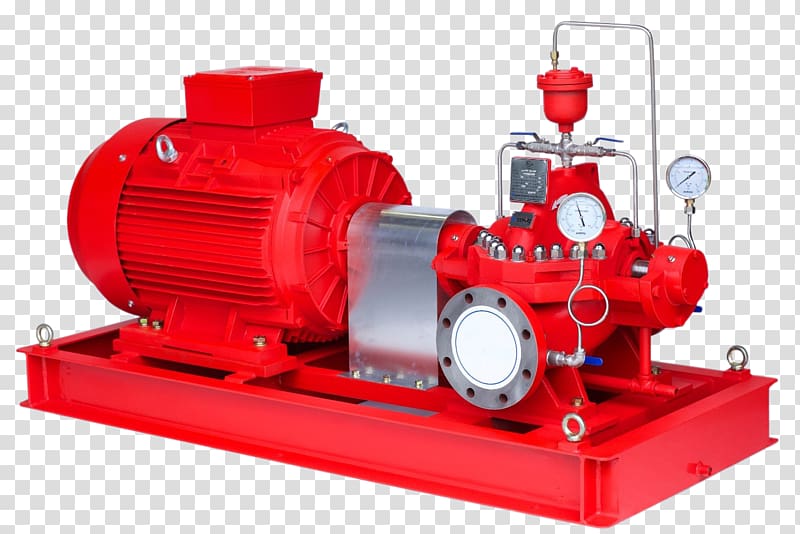Diesel Fire Pump are an economical and reliable means of driving fire pumps. They are currently the only internal combustion engine allowed under NFPA 20. They are required to have a dedicated, listed fuel tank with vents and visual fuel level gauge.
A dike is also typically provided under the fuel tank to prevent oil spills. The engine is allowed to shutdown only on overspeed and low lube oil pressure.
Reliability
A fire pump’s reliability is important for the safety of firefighters and building occupants. When purchasing a fire pump, look for a manufacturer with a good reputation and experience in the industry. A reputable manufacturer will offer a wide range of diesel fire pumps and can provide technical support to ensure proper installation and maintenance.
The first step in the manufacturing process is materials selection, followed by machining and assembly. The finished product is then thoroughly tested to ensure that it meets all the required specifications and quality standards. During testing, the pump is subjected to various conditions such as maximum flow rates, pressure, and temperature. Afterwards, the fire pump is packaged and shipped to its distributor or customer.
Many different types of fire pumps are available, including vertical in-line pumps. These pumps take up minimal space and are highly reliable. They also have a high flow rate and can operate independently of other power sources. They are ideal for use in buildings where space is limited.
When choosing a fire pump, be sure to select a model with a low noise index during operation. This will help minimize noise pollution and prevent the engine from overheating. Ensure that the fuel tank is properly sized, according to NFPA 20 requirements. The tank must contain one gallon per engine horsepower plus five percent for thermal expansion. It should also have a dike to prevent fuel spills.
Efficiency
Fire pumps are designed to operate independently of other systems, making them a great choice for emergency water supply. They can also provide high flow rates and operate for extended periods of time without requiring maintenance. Their portability also makes them easy to transport and deploy in hard-to-reach areas. In addition, they use less fuel than electric fire pumps, making them a more cost-effective choice.
The design and construction of a fire pump requires attention to detail, especially with regard to safety. A good manufacturer will ensure that all components are properly sized and that the fire pump meets the requirements of NFPA 20, UL, and FM. In addition, the fire pump should be fully tested and certified before it is shipped.
The fire pump can be powered by an electric motor, diesel engine, or steam turbine. Electric motors are most common, but diesel engines are often used for fire protection applications that require a redundant system or are located in seismic zones or midway up a high-rise tower. Diesel-driven fire pumps are difficult to install and require a separate pump house for refueling operations and ventilation of combustion exhaust. They also require a fuel storage tank with a capacity of one gallon per fire pump horsepower and an additional volume to allow for thermal expansion.
In some cases, the engine may be able to halt operation in the event of a malfunction, but it is important that it does not overheat or run out of fuel. It is therefore vital to use a high-quality diesel fuel tank with a capacity of at least one gallon per horsepower, and it should be inspected and verified regularly by an NFPA 20 qualified testing company.
Maintenance
The Fire Pump and the electric motor or diesel engine that drive it are at the heart of a facility’s fire suppression system. But like any mechanical device, they need to be properly maintained and inspected in order to work correctly when needed.
A fire pump is a complex piece of machinery that must be constantly lubricated and kept in good condition to ensure that it can handle the pressure and volume required to keep the sprinkler system flowing during an emergency. In addition, the fire pump is regulated to ensure that it delivers adequate water flow throughout the entire building.
During an annual test of a UL/FM Fire Pump, a technician closed the door to the pump room and then went to perform another task. The pump failed the test because it was not able to supply enough water to its engine heat exchanger, causing it to overheat and damage itself.
To avoid such failures, all fire pumps (all types) should be inspected and started weekly to check the general condition of the pump, driver, controller, and water supply suction and discharge. This inspection should include the pump itself, bearings, stuffing boxes, water supply suction and discharge piping, strainers, and engine instruments such as oil pressure, rpm, temperature amps, and battery voltage. An onsite expert diesel mechanic is the best choice to perform these inspections.
Cost
A fire pump is a pressure-increasing component that increases water flow and pressure for sprinkler systems, fire hydrants, and standpipes. It can be driven by a variety of things, including electric motors, diesel engines, and even steam turbines. It is typically a large, heavy duty engine that can be activated by the opening of a fire hydrant valve or a sprinkler head. A fire pump can also be used to boost water pressure for firefighters using their hoses in emergency situations.
The cost of a fire pump is generally more expensive than a similar electric motor-powered model, but it is usually more reliable and less susceptible to power outages. However, it requires an annual maintenance protocol. It should be serviced by someone who is certified to work on diesel fire pumps, as they have many components that must be regularly inspected and tested.
The fire pump is a vital part of the facility’s overall safety. It is a requirement for any building with a sprinkler system or other fixed fire fighting water supply. It is a large, heavy-duty unit that can be activated manually or automatically when a hydrant valve or sprinkler head is opened. Whether you are installing a new building or upgrading your current one, the fire pump will ensure that the fire protection system is ready in case of an emergency.


